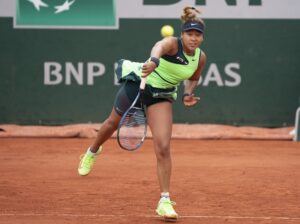It was a disappointing end to the primary clay court season for Jaume Munar. A first round loss to World No. 147 Salvatore Caruso is surely not how Munar envisioned his Roland Garros campaign ending this season. But, alas, Caruso took out Munar 7-5, 4-6, 6-3, 6-3 in a little over three hours.
The clay court season started out fairly strong for Munar. He made the quarterfinals of Cordoba and Buenos Aires, beating former French Open semifinalist Marco Cecchinato, and in his first clay court tournament of the season outside of South America, beat Alexander Zverev to make the quarterfinals of Marrakech. However, there was never a real breakthrough, a title push that would turn heads. And with Roland Garros ending as a dud for Munar, it’s time to take a closer look at what went wrong for the clay court specialist.
Munar’s issues going deep in tournaments on his favorite surface, clay, have a lot to do with the mindset that Munar brings to the court. Munar takes a very defensive court position. He’s often well behind the baseline, scrambling for balls, counterpunching, and trying to buy himself as much time as possible to hit his heavy forehand.
Munar’s defensive mindset
Munar moves around the court very well, and his speed is a huge asset for why he currently 53 in the world. However, because the Spaniard struggles to get aggressive during rallies, opponents are often able to hit through him. And while he does draw a lot of unforced errors–and, as previously mentioned, counterpunches well–consistently engaging in long, physical rallies makes it hard to stay in tournaments long term. Munar doesn’t have a big serve either, so it’s hard for him to end points that way.
The defensive mindset and deeper court positioning are best reflected in his match times. In Buenos Aires he was on court two hours against Frederico Delbonis in a quick three-setter, games-wise, only lasting 23 games. Then in his next match he was on court for two hours and 22 minutes against Fabio Fognini before falling to Guido Pella 6-1 in the third set in a match lasting over three hours.
In Rio de Janeiro, in his second match, Munar beat Cameron Norrie 7-6(4) in the third set in a match lasting three hours and 23 minutes. The next round? A straight sets loss to Felix Auger-Aliassime.
Munar’s loss in his second match of Sao Paulo was a third-set tiebreak loss to Christian Garin, with the match taking two hours and 51 minutes. In Marrakech, later on in the clay court season, his win over Zverev took nearly two-and-a-half hours before a flat showing in the next round against Benoit Paire.
Munar played nearly three-and-a half hours against Borna Coric before losing in a tight third set in Monte Carlo. In Madrid, Munar competed for over three hours in a third-set loss to Karen Khachanov. His Rome qualifying loss was very similar in length, a third-set tiebreak loss to Albert Ramos Vinolas that lasted over three hours. Then there was the loss to Caruso today, a match in which Caruso took the upper hand in rallies and tried to be aggressive, while Munar relied a lot on scrambling. That’s why Caruso hit 50 winners, but Munar only hit 28. The unforced errors were actually pretty similar, with 45 for Caruso, and 42 for Munar.
So what does all of these results and match time information tell us?
Takeaways for Munar
On the ATP Tour, players are aggressive. They take the ball on the rise, try to get themselves on the baseline or even further up in the court, and generally play very solid when in a winning position in the rally. It’s exceedingly difficult to try to stand well behind the baseline, scrambling after balls, with limited weapons to hurt the opposition.
Because, while Munar is consistent, and has a heavy forehand that he likes to run around, his shots aren’t penetrating enough to hurt high-level opposition when they are playing well. He can hang with them and goad them into a bunch of unforced errors, keeping himself in the match, but opponents are hurting themselves from a lack of patience as much as Munar is hurting them.
Munar simply isn’t aggressive enough. David Ferrer was a counterpuncher, but he was desperate to establish a presence on the baseline. Ferrer knew that if he tried to play the style that Munar is playing, long term, it would not be very successful. It’s really hard when you’re playing for as long as Munar plays on a consistent basis, and running around as much as he runs around, to make the semifinals or final of a tournament. It’s only a matter of time before you reach an in-form player who will take advantage of your defensive court positioning, and/or your body runs out of gas. It might be during the match, as it was against Coric in Monte Carlo or against Khachanov in Madrid. Or it could be a match or two later, as it was Rio against Auger-Aliassime or against Paire in Marrakech.
In Roland Garros today, Munar’s match wasn’t exceedingly long, but he was on the run a lot. Caruso, meanwhile, was consistently aggressive, putting himself in winning positions during the point. A player can only scramble around for so long before even a player outside of the top 100 starts to break him down.
So, for Jaume Munar to really take his game to the next level, he will have to be more aggressive. He will have to step up in the court and take the fight to his opponents.
If he can do that, Munar will be very happy he did.
Main Photo:
Embed from Getty Images






